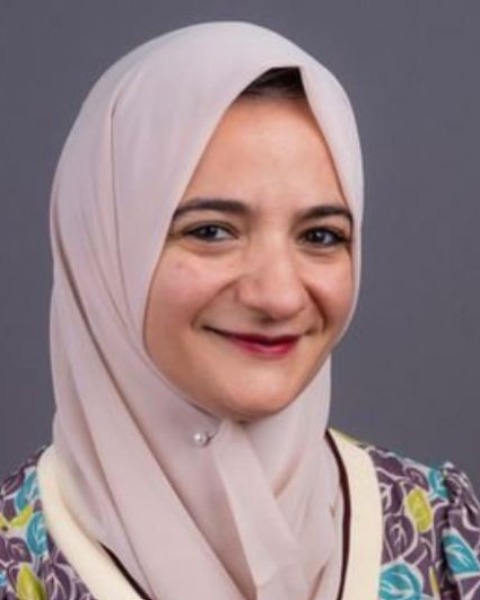Cardiovascular Posters
Poster: Cardiovascular Posters
13 - Empowering Hearts : Bridging Gaps with 3D Models and Web-based 3D Visualization for Congenital Heart Disease Education in a Developing Country
Sunday, March 24, 2024
5:00pm - 7:00pm US EDT
Location: Sheraton Hall
Poster Board Number: 13
There are separate poster presentation times for odd and even posters.
Odd poster #s – first hour
Even poster #s – second hour
Co-authors:
There are separate poster presentation times for odd and even posters.
Odd poster #s – first hour
Even poster #s – second hour
Co-authors:
HAKIM CHIALI - Anatomis; Neserine Imouloudene - Rahima Clinic

Akila BERSALI, M.D
Cardiologist
Pediatric medico-surgical Center Bouismail
Bouismail, Tipaza, Algeria
Presenting Author(s)
Abstract Body : Introduction and Objective: The use of segmental anatomy to study complex congenital heart disease has become obsolete with the advent of 3D models and 3D visualization technology. Although these technologies have progressed significantly over the past few years, their implementation remains somewhat challenging in developing nations.
The aim of our study was to evaluate the spatial understanding of segmental anatomy and TTE key views in the analysis of congenital heart disease by utilizing 3D printed models and web-based VR models.
Materials and Methods: A cross-sectional study involving cardiology residents compared the utilization of 2D grayscale echocardiography images, 3D printed models, and 3D web-based virtual reality (VR) models in relation to understanding the segmental approach and diverse key TTE diagnostic views of congenital heart disease. To evaluate participants' comprehension of the connections between the cardiac chambers utilizing these three formats, a multiple-choice survey was conducted.
Results: Out of the 10 participants, using 3D models and web-based VR models resulted in a higher accuracy of interpretation (80%, 90%, respectively) compared to the conventional 2D TTE view. 3D models were found to be not only accurate but also significantly faster to interpret than standard 2D TTE views (P = 0.001). Additionally, interpretation was found to be faster with the use of 3D-printed models. Furthermore, the subjective assessment revealed that interpretation using standard 2D views was more challenging, but the confidence level improved with the use of 3D formats."
Conclusion: The integration of 3D modeling and 3D visualization tools has significantly improved the comprehension of congenital heart disease anatomy and made education more accessible, yet there are still economic obstacles for developing countries to overcome.
Significance/implication: The aim of this project was to secure funding for the development of 3D models to enhance resident’s education and, lastly, surgeon training and decrease patient transfer expenses abroad. This will lead to improved surgical skills locally, a reduced need for patient transfers, and ultimately cost savings in healthcare.
Funding sources: Big thank you to Woman as One for backing my training and growth in the field, to the startup Anatomis for supplying us with the 3D models despite the hurdles they faced, and the creator of APIL slice for accessible virtual 3D models.
The aim of our study was to evaluate the spatial understanding of segmental anatomy and TTE key views in the analysis of congenital heart disease by utilizing 3D printed models and web-based VR models.
Materials and Methods: A cross-sectional study involving cardiology residents compared the utilization of 2D grayscale echocardiography images, 3D printed models, and 3D web-based virtual reality (VR) models in relation to understanding the segmental approach and diverse key TTE diagnostic views of congenital heart disease. To evaluate participants' comprehension of the connections between the cardiac chambers utilizing these three formats, a multiple-choice survey was conducted.
Results: Out of the 10 participants, using 3D models and web-based VR models resulted in a higher accuracy of interpretation (80%, 90%, respectively) compared to the conventional 2D TTE view. 3D models were found to be not only accurate but also significantly faster to interpret than standard 2D TTE views (P = 0.001). Additionally, interpretation was found to be faster with the use of 3D-printed models. Furthermore, the subjective assessment revealed that interpretation using standard 2D views was more challenging, but the confidence level improved with the use of 3D formats."
Conclusion: The integration of 3D modeling and 3D visualization tools has significantly improved the comprehension of congenital heart disease anatomy and made education more accessible, yet there are still economic obstacles for developing countries to overcome.
Significance/implication: The aim of this project was to secure funding for the development of 3D models to enhance resident’s education and, lastly, surgeon training and decrease patient transfer expenses abroad. This will lead to improved surgical skills locally, a reduced need for patient transfers, and ultimately cost savings in healthcare.
Funding sources: Big thank you to Woman as One for backing my training and growth in the field, to the startup Anatomis for supplying us with the 3D models despite the hurdles they faced, and the creator of APIL slice for accessible virtual 3D models.

